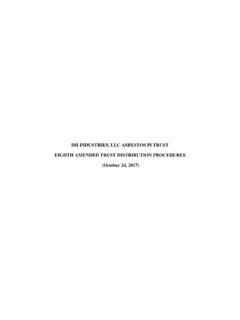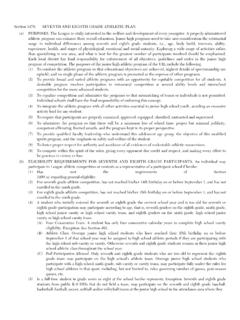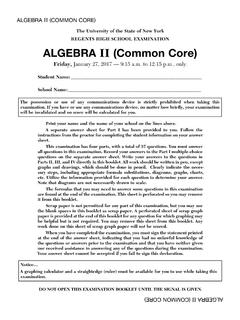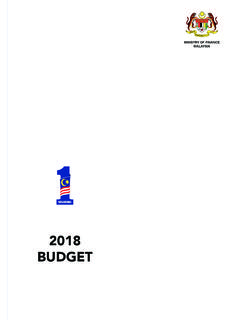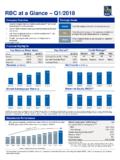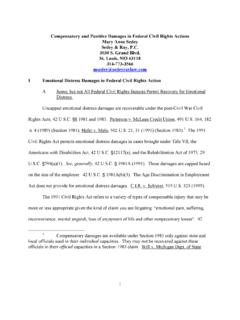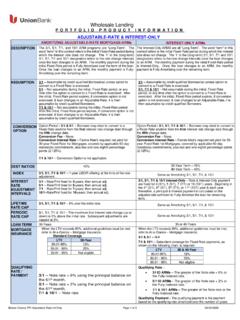Transcription of 027-31: Improve Your Dating: The INTNX Function …
1 1 Paper 027-31 Improve Your dating : The INTNX Function alignment value SAMEDAYB ruce Gilsen, Federal Reserve BoardINTRODUCTIONThe data step Function INTNX returns a SAS date value incremented by a specified number of intervals (days, weeks, months,quarters, years, etc.). INTNX s optional fourth argument determines how the SAS date is aligned before it is defaults to "beginning", so INTNX ('year','20nov2002'd,-1) first aligns to January 1, 2002 (the beginning of the interval, year),then subtracts one year, and the unexpected result is the SAS date value for January 1, 8 alignment values were beginning , middle , and end , so you could not preserve alignment with INTNX ( , subtractone year from November 20, 2002 and get November 20, 2001).
2 Various less straightforward coding methods that preservedalignment have been discussed in conference papers and the SAS-L Internet Version 9, a new alignment value was added: sameday , which preserves the SAS date value s alignment within the intervalbefore it is incremented. INTNX ('year','20nov2002'd,-1, sameday ) is the SAS date value for November 20, 2001. This paperillustrates the use of sameday , including interesting cases such as one year and four years after February 29, 2000 and onemonth before March 31, 2003 and March 31, SYNTAXIn this section, the syntax of INTNX is reviewed somewhat informally and incompletely.
3 For example, information is provided forSAS date values, but not for datetime and time values, and sub-arguments to the interval value are omitted. For complete syntax,see the SAS Language Reference: Dictionary, Volumes 1, 2, and has three required arguments and one optional argument, commonly used as follows for SAS date (interval, start-from, increment <, alignment >);!interval is the unit of measure (days, weeks, months, quarters, years, etc.) by which start-from is incremented.!start-from is a SAS date value to be incremented.!increment is the integer number of intervals by which start-from is incremented (negative values = earlier dates).
4 ! alignment is where start-from is aligned within interval prior to being incremented. Possible values are beginning , middle , end , and (new in Version 9) sameday . The default value is beginning . INTNX IN VERSION 8 INTNX s default alignment is "beginning", so by default start-from is aligned to the beginning of the period before beingincremented. This leads to unexpected results for intervals other than day, as in the second and third INTNX ('day','20nov2002'd,-7); to increment the date by -7 days (seven days earlier).SAS subtracts seven days from 15,664, the SAS date value for November 20, 2002.
5 The result is 15,657, the SAS date valuefor November 13, 2002, as INTNX ('month','20nov2002'd,1); to increment the date by one month. The expected result is 15,694, the SAS date value forDecember 20, first aligns to November 1, 2002 (the beginning of the interval, month), then increments by one month. The result is15,675, the SAS date value for December 1, INTNX ('year','20nov2002'd,-1); to increment the date by -1 year (one year earlier). The expected result is 15,299, the SAS datevalue for November 20, first aligns to January 1, 2002 (the beginning of the interval, year), then subtracts one year.
6 The result is 14,976, the SASdate value for January 1, CornerSUGI31 2 Specifying alignment as middle or end does not yield the desired result. Gilsen (2003) has a simple solution for year intervals. Whitlock (1999) has a generalized macro that handles various intervals. Other solutions have been presented in conferencepapers and on the SAS-L Internet newsgroup. No solution is as simple as IN VERSION 9: sameday alignment ADDEDIn Version 9, a new alignment value , sameday , was added. sameday preserves the SAS date value s alignment within theinterval before it is incremented, generating the expected results, as in the following examples.
7 Note that 2000 and 2004 but not2003 are leap Statement Description Result SAS date valueintnx('day','20nov2002'd,-7, sameday ); 7 days before 11/20/02 15657 November 13, 2002intnx('month','20nov2002'd,1,"sameda y"); 1 month after 11/20/02 15694 December 20, 2002intnx('year','20nov2002'd,-1,"sameda y"); 1 year before 11/20/02 15299 November 20, 2001intnx('year','29feb2000'd,1," sameday "); 1 year after 2/29/00 15034 February 28, 2001intnx('year','29feb2000'd,4," sameday "); 4 years after 2/29/00 16130 February 29, 2004intnx('month','31mar2003'd,-1,"samed ay"); 1 month before 3/31/03 15764 February 28, 2003intnx('month','31mar2004'd,-1,"samed ay").
8 1 month before 3/31/04 16130 February 29, 2004 CONCLUSIONThis paper demonstrated the sameday alignment value , a Version 9 enhancement to the data step Function INTNX that makesit easier to increment SAS date more information, contact the author, Bruce Gilsen, by mail at Federal Reserve Board, Mail Stop 157, Washington, DC 20551,by e-mail at or by phone at , Bruce (2003), "Date Handling in the SAS System," Proceedings of the Twenty-Eighth Annual SAS Users GroupInternational Institute Inc (2004), "SAS Language Reference: Dictionary, Volumes 1, 2, and 3," Cary, NC: SAS Institute Inc.
9 Whitlock, H Ian (1999), Managing the INTNX Function , Proceedings of the 1999 SouthEast SAS Users Group following people contributed extensively to the development of this paper: Donna Hill and Steve Taubman at the FederalReserve Board. Their support is greatly INFORMATIONSAS and all other SAS Institute Inc. product or service names are registered trademarks or trademarks of SAS Institute Inc. in theUSA and other countries. indicates USA registration. Other brand and product names are registered trademarks or trademarksof their respective CornerSUGI31











